How to Create a Successful e-commerce App Like Amazon: A Step by Step Guide
8 Apr 21 

How long have you been planning to create an e-commerce app?
Are you someone who’s still not sure about taking your supplies stores, grocery shop, supermarket online?
Then the recent outbreak of the COVID-19 must have shown you something very clearly.
The world is mobile. There is hardly any case of total cut-off. Because mobile ensures connectivity, across boundaries, across regions, across districts and domains. Online delivery of essential goods and services has become a government priority. Even in regions where it was unheard of, the capacity is being built.
In a way, the Coronavirus outbreak is building a world where buying and selling of goods do not need your presence at the shops or malls. So, it is high time to leverage on an e-commerce app development to push your falling sales and hurdles.
Still, Doubt the Future of E-commerce Apps?
We know that to invest in an e-commerce app looks like a gamble to you.
But in reality, the background was quite ready before the COVID-19 outbreak. It was just that little self-doubt that was holding back businesses from adopting an e-commerce application.
Want to know how? Check out these strong indicators that say people love it in mobile than stores:
1. People love to shop online
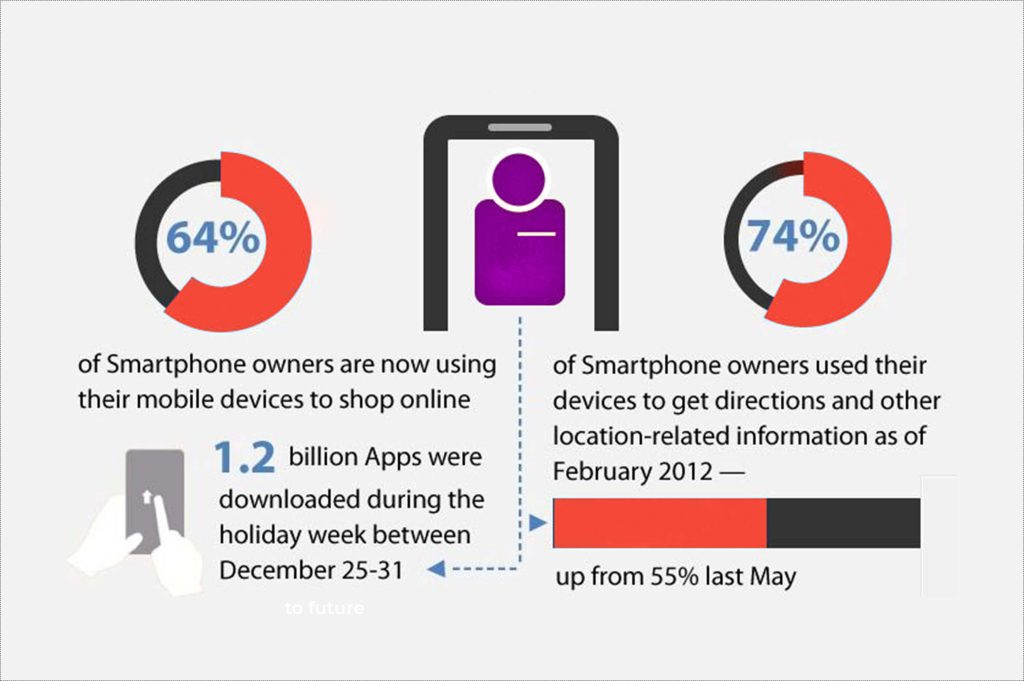
The number is bound to increase with more and more people coming online. For example, in 2017, customers spent a whopping 5 billion dollars online on Black Friday in the United States. So, if you think people are still offline, you need to do your research.
2. Small businesses perform better through mobile solutions
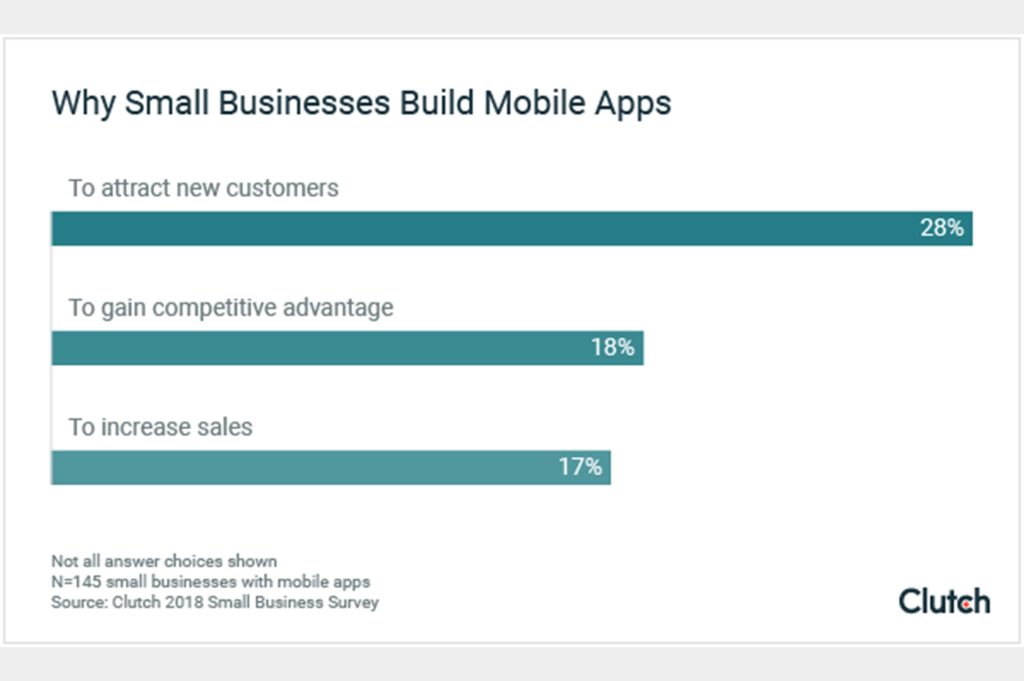
The large businesses are scaling online and small businesses were erring. But not anymore as the recent studies show that small businesses are making 30% more conversions the mobile route than otherwise. So there is no wonder in seeing small businesses adopting mobile apps. The stats from Clutch below shows it clearly:
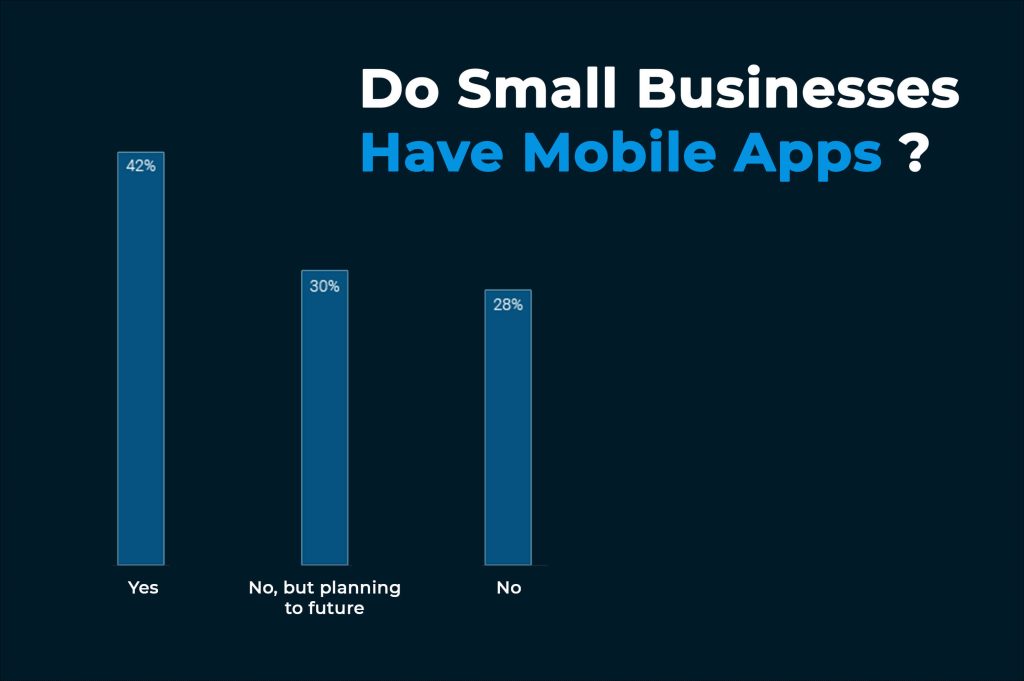
3. Millennials like it mobile
It is essential to watch the millennial trend. Because they are your future customers. Marketing analytics show that nearly 60% of millennials use mobile devices for making purchases.
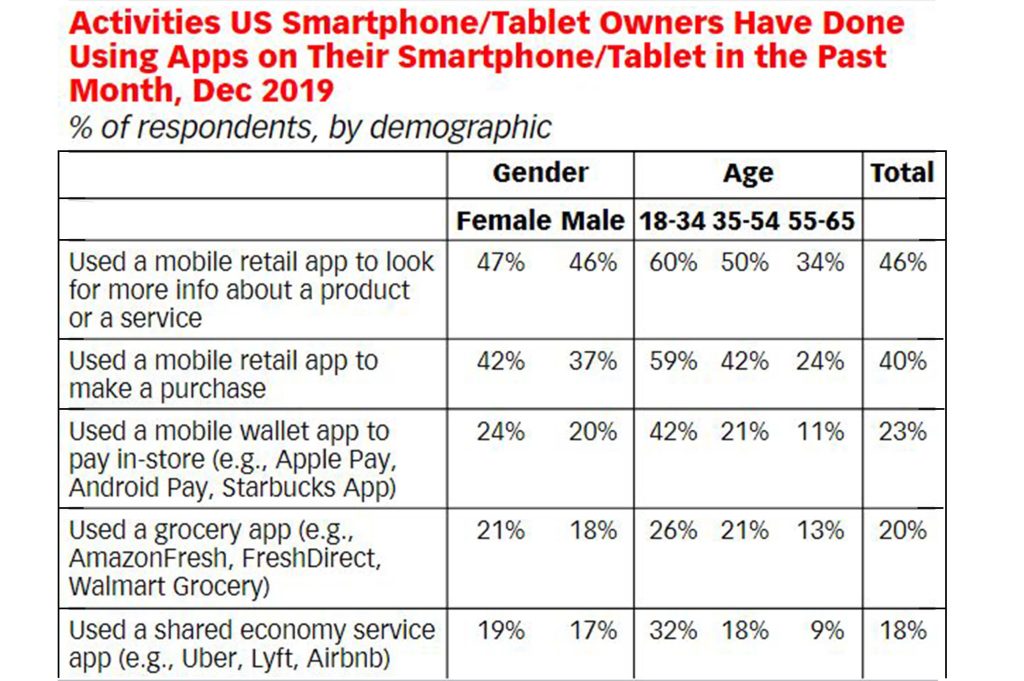
All these factors indicate that the millennial is well into mobile apps. Its dependency on mobile solutions for much of the essential life services is quite clear from the above stats. So the future is really mobile as much as reality is concerned.
Why Focus on Building an “AMAZON -like” e-commerce app?
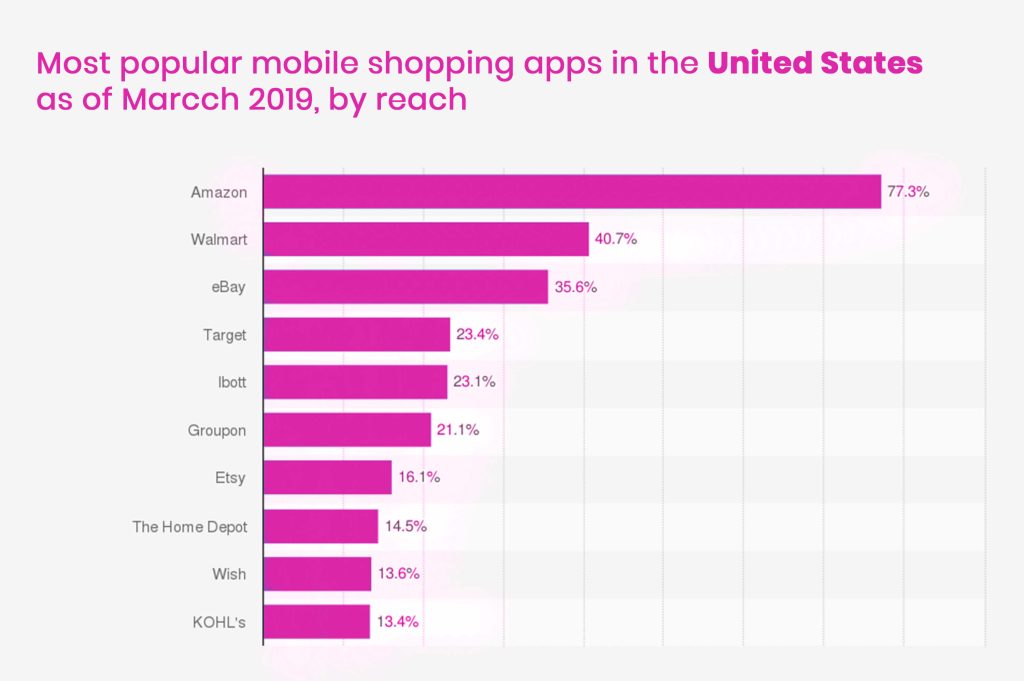
Just look at the above statistics. Amazon is the most popular app in the United States when it comes to mobile shopping.
But why?
The answer doesn’t lie in the size of a company but on some basic principles it follows.
Do you know Amazon just started as a simple internet bookstore?
Well, if you didn’t, know it now.
In just 27 months since inception, they got to serve around a million customers. They achieved this through no miracle, but through the same basic principles.
So now let’s talk about those success principles Amazon follows:
1. Customer Needs Assessment
Amazon when starting as a bookstore that operates online had something
Already up to their sleeves. They had researched well into what their customers needed. The booklists, the formats that they will prefer, the usual digital parlance of reading a book and starting, pausing again and craving for the same kind of genre and much more. The ability to hit on the heart of customer needs was something that provided them with a great headway in the competition.
2. Make Customer Life Easy
Customers are just like you, they don’t want their product hanging at arm’s length. They want it in their hands, wherever possible. A very basic human urge that Amazon perfectioned in their app design. The categories they brought in their apps are simply amazing. One can just arrive at the right display screen with a few clicks. And when it’s easy customers come again and again.
3. Surprise Your Customers
It is just another element that Amazon apps capitalize. They just send you the right kind of notifications most of the time. How do they guess it? The Artificial Intelligence tool that Amazon uses learns through your engaging patterns the things you need or may need in the near future. And when the push notifications hit you one fine morning you feel surprises. The offers and game coupons are also something amazon uses a lot to expand its reach.
4. Give Room to Customers to Express
Many business owners are reluctant to face critical comments. They are just naive to expect a honey shower from everyone. Or that’s what Amazon feels because Amazon really takes its customers very seriously. The comment and review sections are almost always well attended. In fact, it is this section that makes Amazon more authentic as the company allows democracy to prevail here.
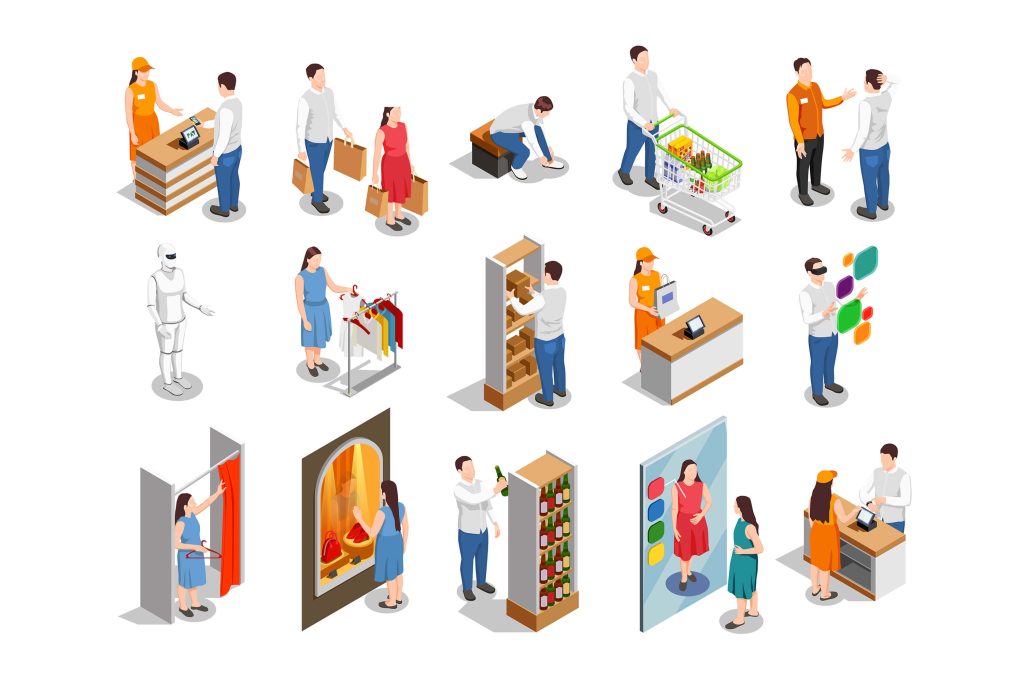
The Process of Building an eCommerce Apps
We have developed some successful e-commerce applications. And our experts have seen the turn of tides in the app market over our decade long experience in mobile app development. The process we follow at Mindster to build e-commerce applications is unique for every customer.
However, the app making processes we follow are similar to Amazon’s app development idea. Here we share the detailed process of making an e-commerce mobile application that succeeds in today’s market scenario:
1. Identify Your Niche
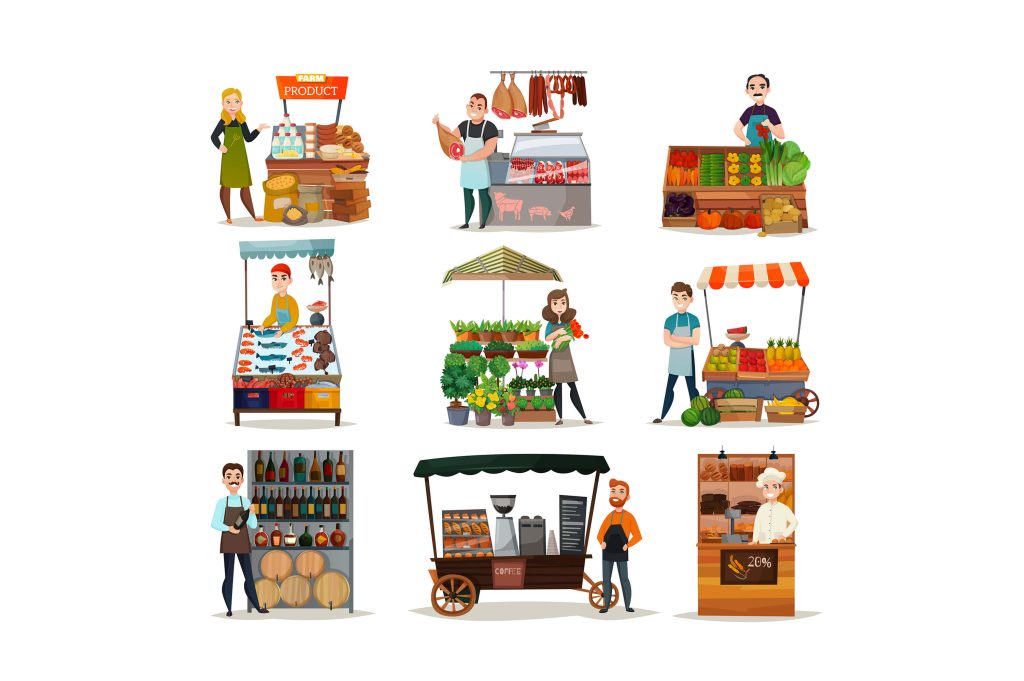
The first step in building an e-commerce application is to decide on your niche. Your niche would include diverse aspects like the products you are planning to sell. The categories that you intend to host in your virtual stores. For example, you may plan to focus more on primary grocery elements like rice, butter, milk, eggs. In that case, you may need to move your other goods like clothing, accessories, books etc to the secondary sections.
The choice of your location should, however, be preceded by a thorough market study. For example, at Mindster our business analysts and industry experts conduct extensive studies to determine the purchasing tendencies, the buying patterns in already existing shops, the viability of importing certain goods, the probability of pushing particular products through marketing and the chances of users adopting them through analysis of previous experiences, etc.
All these factors along with your strong areas of supply-chain should be identified and marked as your preferred niche. Another important thing to consider at this stage is the customers you are targeting, their age group, their mobile use statistics, studies on their online spending trends etc.
2. Planning Essential Features
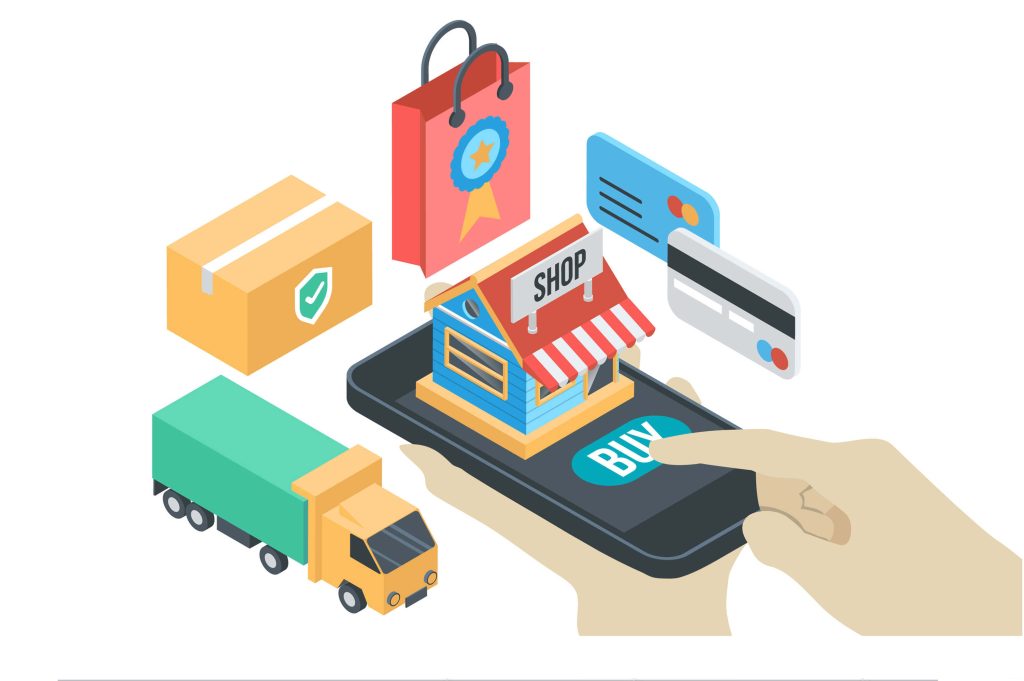
The mapping of the essential features for e-commerce apps is the next thing on the e-commerce app development process. We need to understand that users are turning more and more mobile-dependent. Hence it is vital to ensure them comfort as much as possible through app features.
For example, an e-commerce app with products in disarray will disengage users and put them off. Some essential features for every creative mobile application focussing on e-commerce are:
- Simple authentication feature like social media login or two-step login, etc
- Product search with categories and sub-types
- Rating and review systems to build rapport with customers
- Multiple payment methods that are fully secure
- Easy-in and easy-out policy
- Compelling push notifications
- Customer support
- Tracking of the product accurately
- Advanced features like AI and AR integrated try out the process
The array of features you choose to implement are directly related to the eCommerce app development cost. Once the essential features are mapped out clearly the next step in the app-building process is to get down to app building.
3. Balancing Design Elements
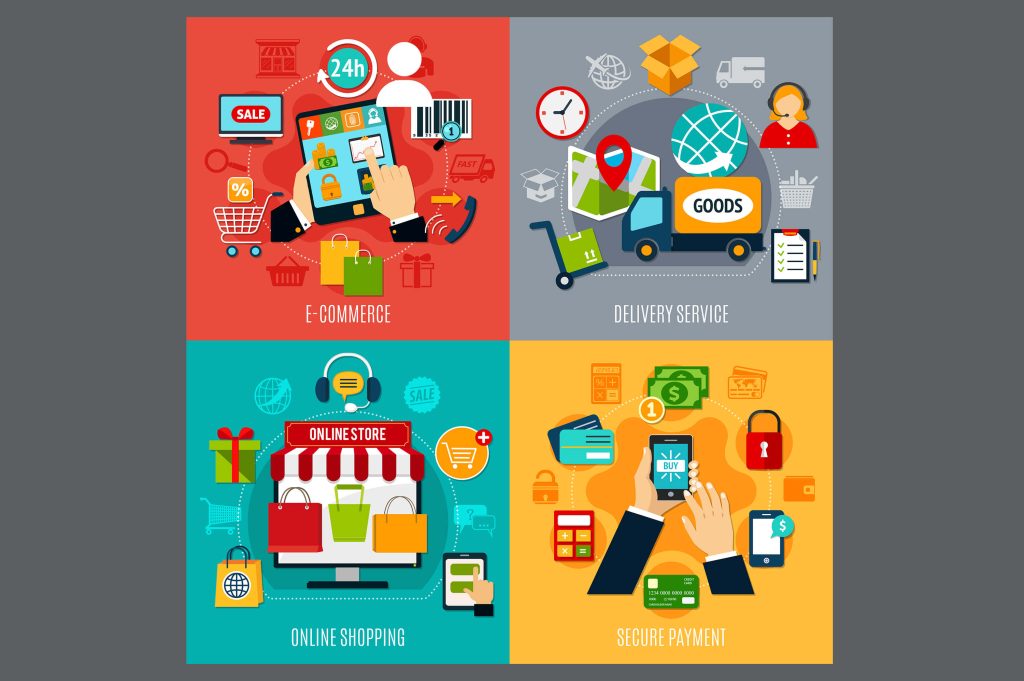
one of the pinnacles of success of e-commerce applications like Amazon is the user-aiding design. A design that reads the user mind and provides the keys and buttons to navigate with ease is going to win customer’s hearts.
The wireframing of the app, the placing of the essential features, simplifying check-out processes, etc form the core of design considerations. However, these features need to be considered with clients as they can have an impact on the cost to develop an app. Hence, constant client interaction is an unsaid ritual to follow in this step.
If you look at an amazon app you find some specific design frameworks that they have followed throughout the application, like :
- Using a simple one-column structure in the interface to showcase products
- Simplicity through high-level functions like cart, search, streamlined menu, wishlist, etc.
- Minimum product information upfront and more info for those who need more
- A minimal graphics, colour and easy interface to keep things clear and clean
It is also the time to design your brand and plan a logo or name that fits your design feel. Most people name their child after birth, but our experience shows that an app follows its name and hence to decide on it during the creative phase is more productive.
4. Platform Selection & Development
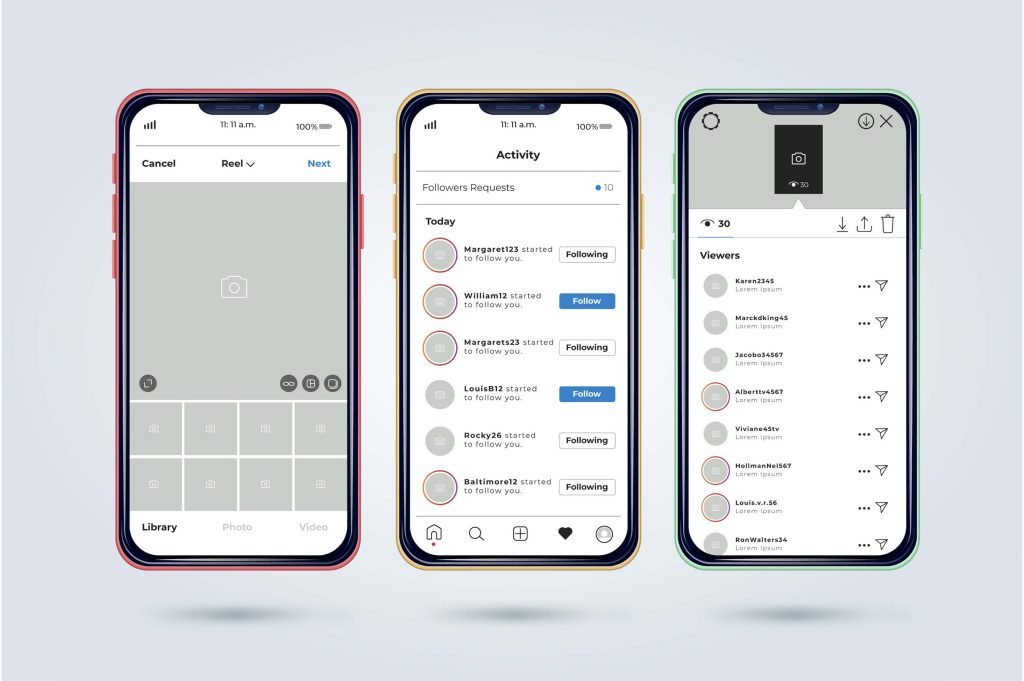
The next step is to choose the platform whether it is iOS or Android or a PWA that you want for your e-commerce mobile application. While many of the on-demand services are Android, innovative and targeted apps decorate the iOS app store. The region of your operation, the economic situation of your priority customers are all the determining factors of platform selection.
It is well known that iOS applications score well in North American and most of the EU with some exceptions. A visionary mobile app development company would decide it on the market analysis stage itself to give a philosophical direction to the mobile app development.
5. Intensive Testing
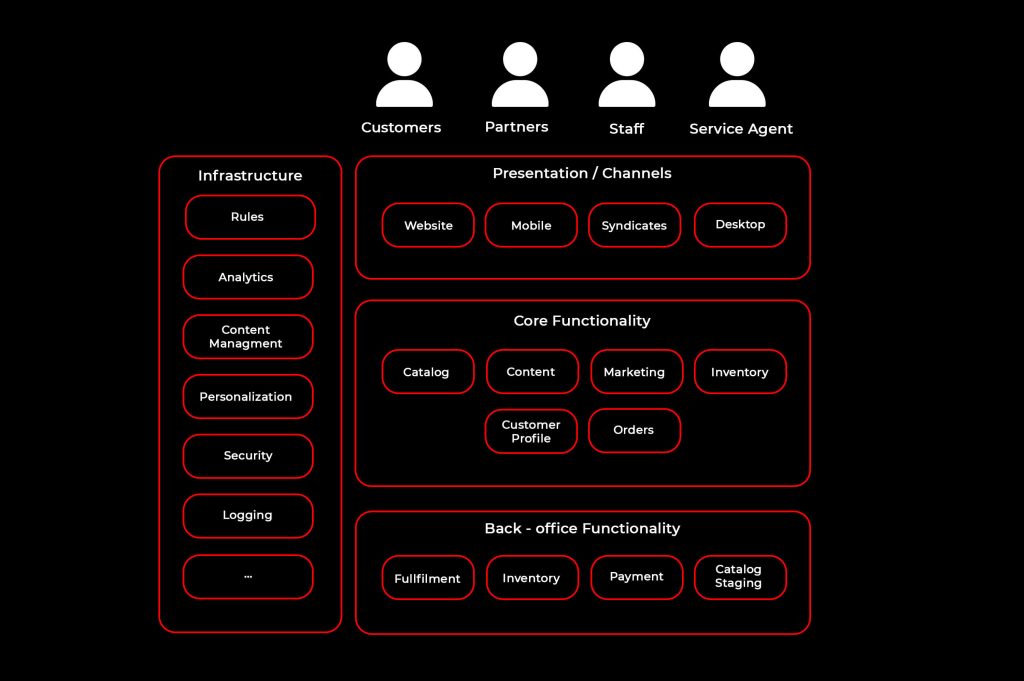
Just check out the above architecture of an e-commerce application. The key interacting elements customers, staff, supply-chain operators, etc. The diverse channels of entry through mobile, web, syndicates, desktops. The blending of the core functionalities of the mobile app with the back-end functionalities all shows that testing an e-commerce app is not an easy task yet inevitable for success.
Now, when we come to testing e-commerce applications the most important focus areas besides the standard test cases are :
- The Workflow of the e-commerce application
- Payment gateway functionality
- Compatibility with web browsers
- SEO and mobile responsiveness
- Social Media integration
6. App Launch and Support
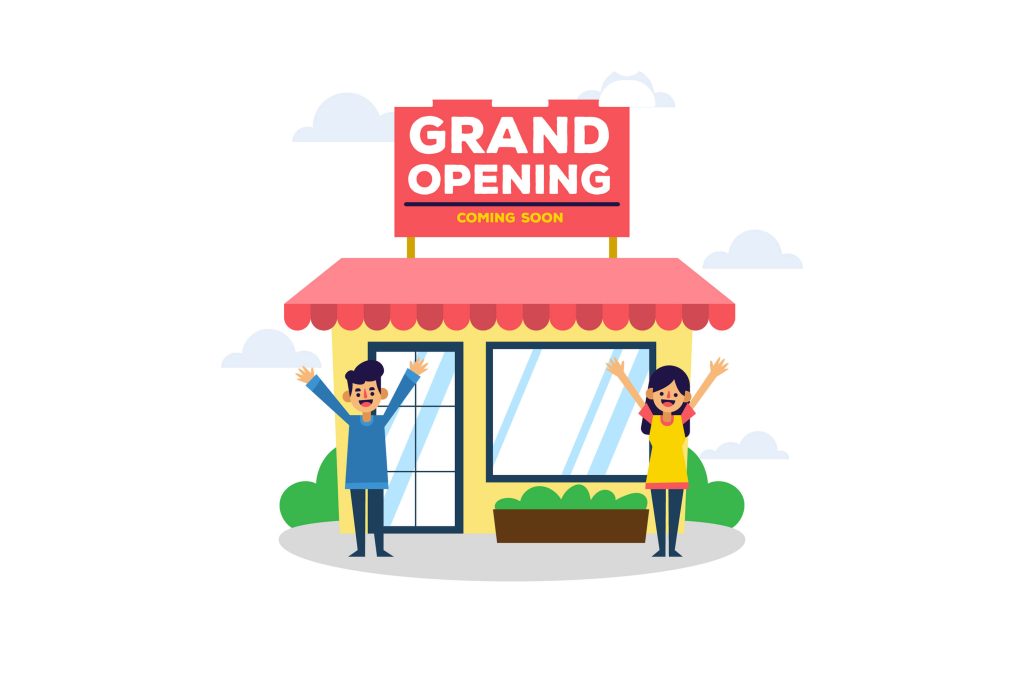
Finally, it is time to launch your app. The first stage gives you much insight into the marketing activities required for the final app launch. The social media promotions, the google ads, video ads and many other techniques like gaming, offers, etc can help your app get the right reach.
The thing that keeps an e-commerce company going forward is the way it treats and responds to its customers. So, always be ready with innovative and caring customer updates to impress them and engage them almost every day.
Going dexterously through all the above steps will make it sure that your app is one of a kind and hits the road to success in a matter of weeks.
If you want to build amazing Amazon-like e-commerce apps for corona time, you can schedule a virtual meeting with us. Mindster is already supporting many e-commerce stores like Mahavir, Big Bachat etc. We also offer you a quick to launch white-labelled solutions to save your stocks facing expiry to reach the right customers.
- Agentic AI1
- Android Development3
- Artificial Intelligence31
- Classified App3
- Custom App Development5
- Digital Transformation12
- Doctor Appointment Booking App14
- Dropshipping1
- Ecommerce Apps40
- Education Apps2
- Fintech-Apps37
- Fitness App4
- Flutter4
- Flutter Apps20
- Food Delivery App5
- Grocery App Development1
- Grocery Apps3
- Health Care10
- IoT2
- Loyalty Programs9
- Matrimony Apps1
- Microsoft1
- Mobile App Maintenance2
- Mobile Apps127
- Product Engineering6
- Progressive Web Apps1
- React Native Apps2
- Saas Application2
- Shopify9
- Software Development3
- Taxi Booking Apps7
- Truck Booking App5
- UI UX Design8
- Uncategorized6
- Web App Development1









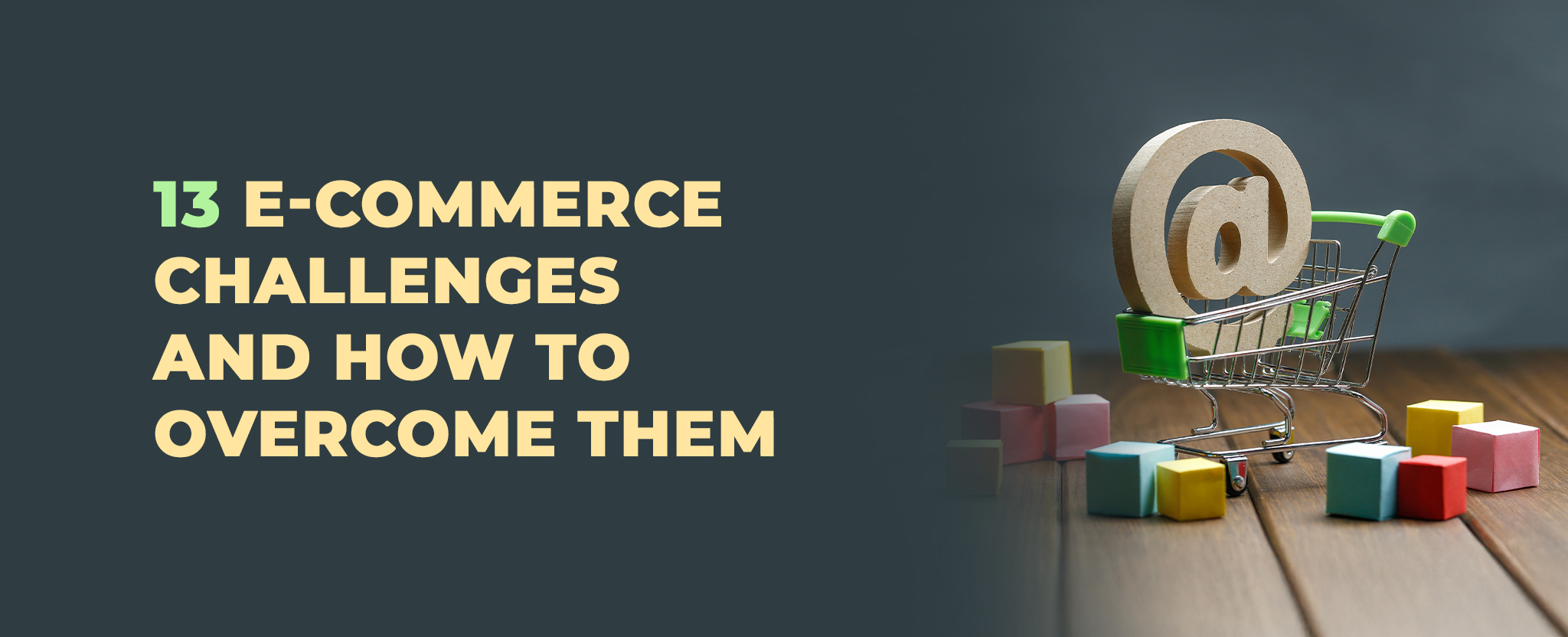
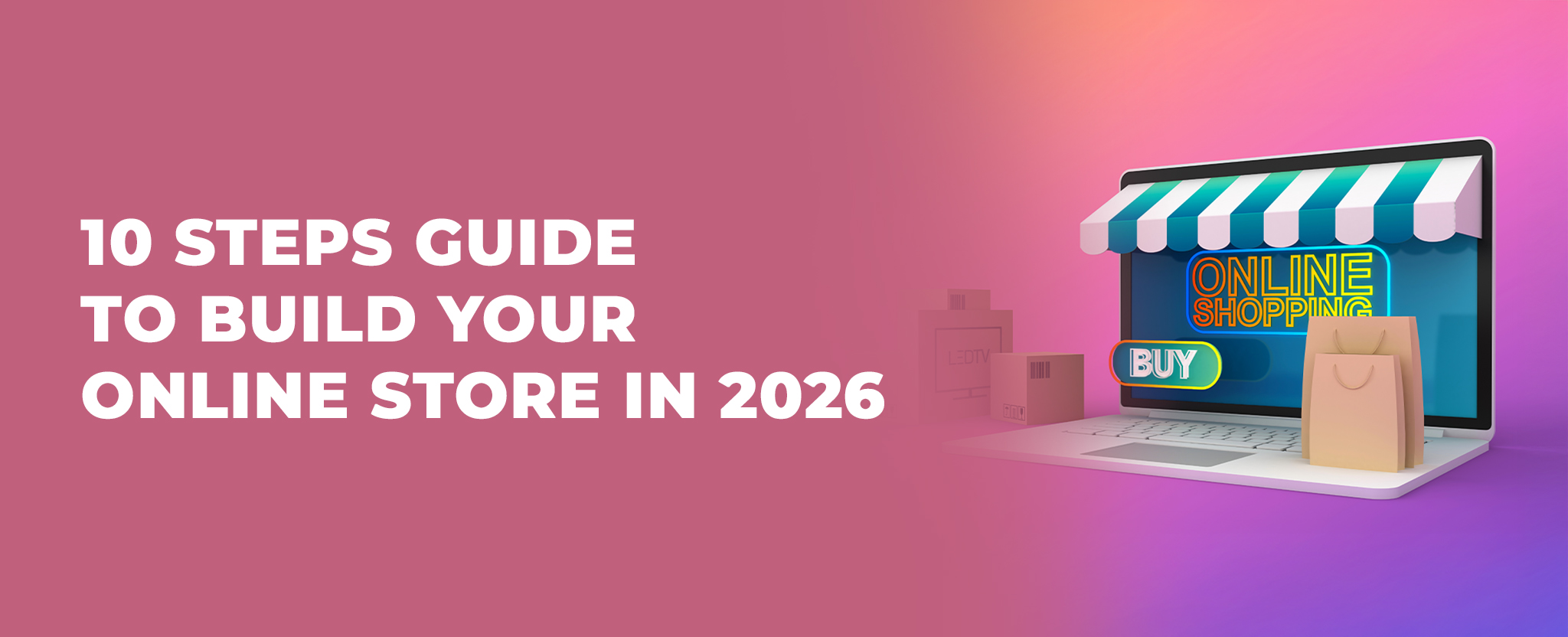
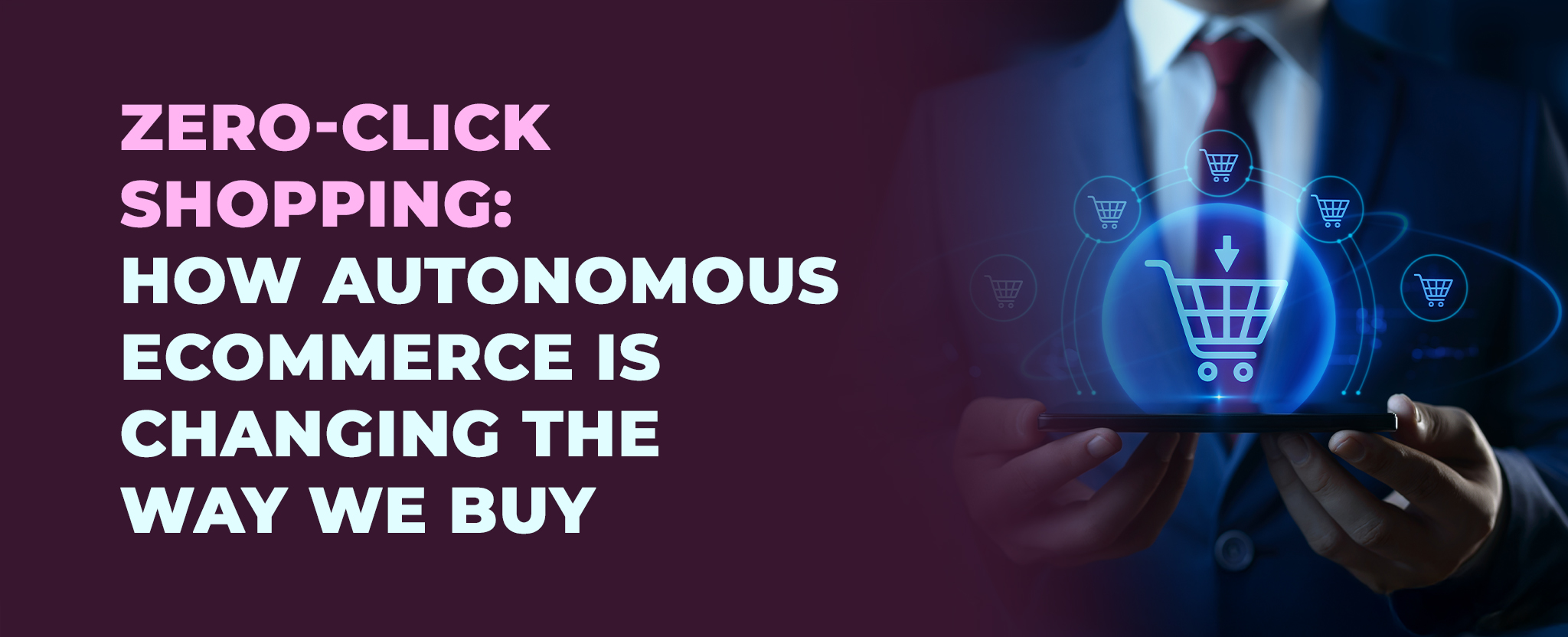
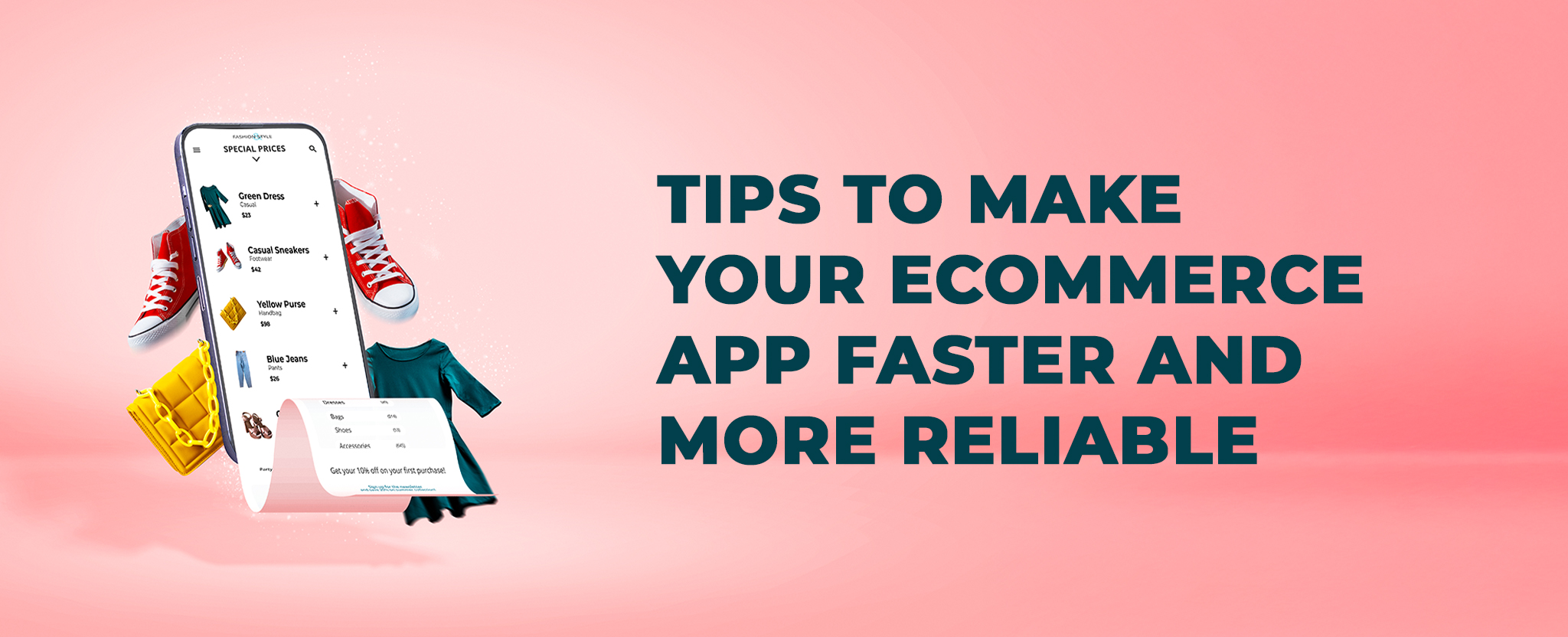






Comments